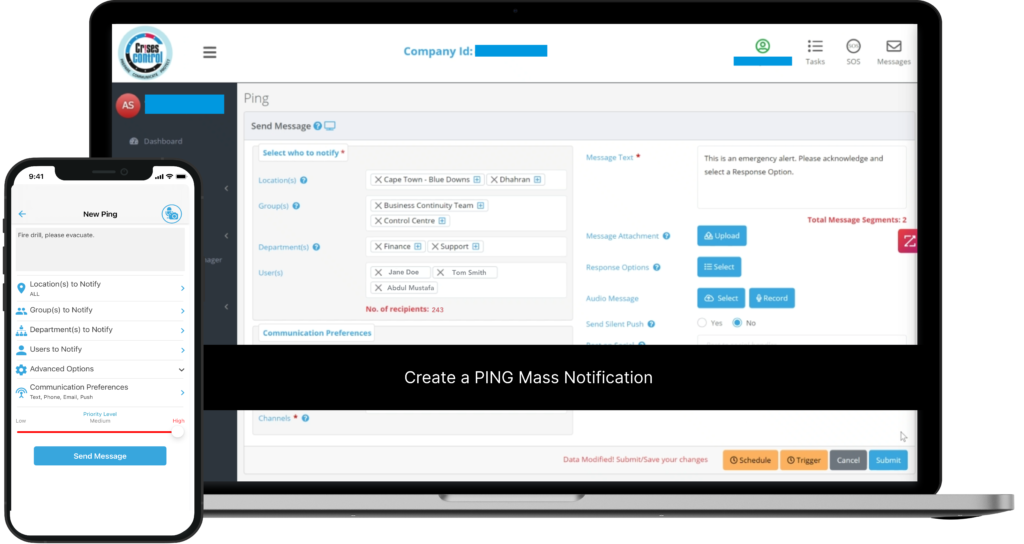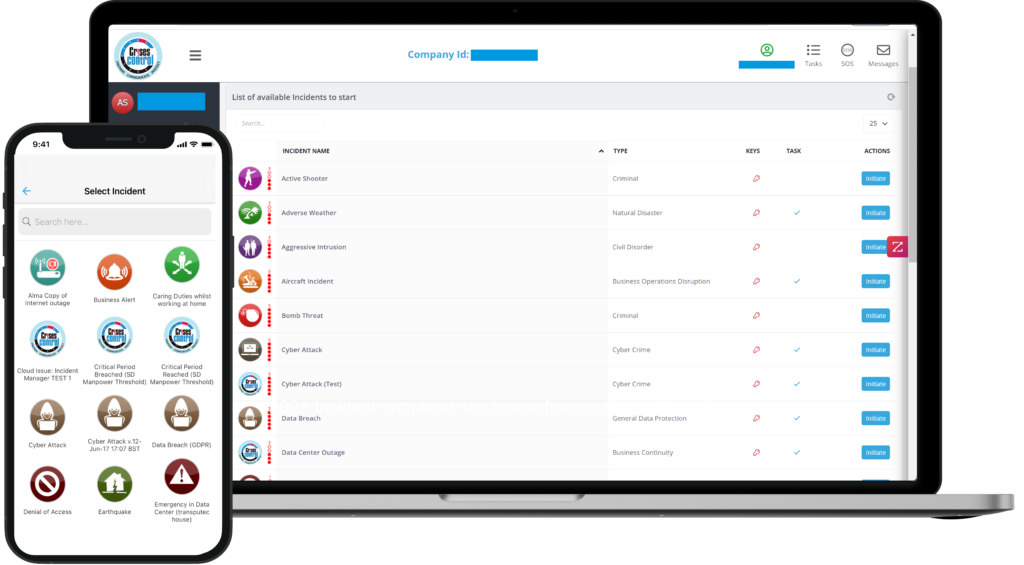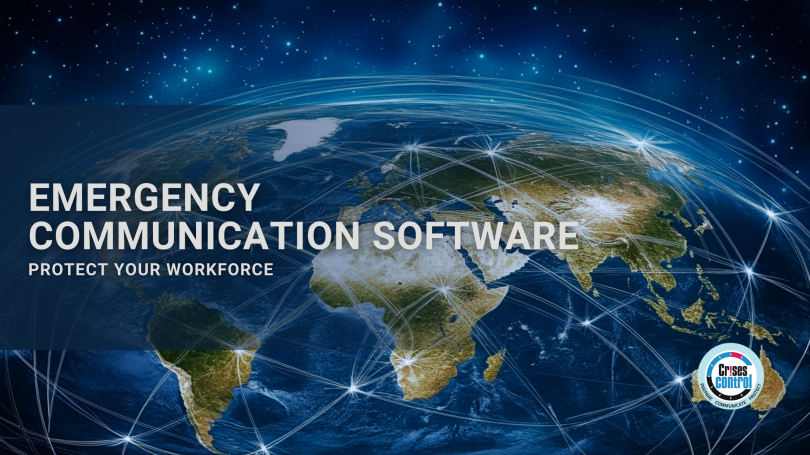Written by Shalen Sehgal | CEO
Where crises seem to emerge at a moment’s notice, businesses must be prepared to respond quickly. One of the most critical components of any emergency response plan is communication. When an emergency strikes—whether it’s a natural disaster, a cyberattack, or even a public health crisis—how you communicate with your team can determine whether they stay safe and your business remains operational. This is where Emergency Communication Software comes into play.
This blog will dive into how Emergency Communication Software not only protects your workforce, but also helps ensure business continuity during a crisis. We’ll discuss key features such as mass notification systems, task management, and mobile accessibility and show you how Crises Control can provide the solutions you need to handle any emergency situation.
Why Communication is Crucial in a Crisis
Effective communication during an emergency is not just about getting information out. It’s about making sure the right people get the right information at the right time. In a fast-moving crisis, delays or miscommunication can lead to chaos, confusion, and even put lives at risk.
For instance, imagine a fire in your office building. If employees don’t receive clear and timely instructions, they may be unaware of evacuation routes or the severity of the situation. Without a structured communication system, the risk of injury or even fatalities increases, as does the damage to your business operations.
In these moments, having a reliable Emergency Communication Software allows you to:
- Deliver real-time alerts across all devices and locations
- Provide clear instructions that keep your employees safe
- Coordinate response efforts between different teams and departments
- Track responses to ensure everyone is accounted for
So, what are the key components of this kind of software? Let’s break them down.
The Role of Emergency Mass Notification
A cornerstone of any effective Emergency Communication Software is the Emergency Mass Notification System. When a crisis hits, you need to inform all employees immediately, regardless of where they are or what device they’re using. Mass notification systems allow businesses to send out urgent messages through multiple communication channels—text messages, emails, app notifications, phone calls, and even social media—ensuring maximum reach.
Multi-Channel Alerts for Maximum Coverage
One of the biggest advantages of using a mass notification system is the ability to reach people through different platforms. In an emergency, some people might have access to their phones but not their email. Others might only receive notifications through a work app or their desktop.
With Crises Control’s Ping Emergency Mass Notification Software, you can send alerts simultaneously across all channels, ensuring that no one misses a critical message. More importantly, you can segment your audience. This means you can send specific notifications to those in the immediate danger zone, while others receive updates on what’s happening.
Example in Practice: During a flood, you might need to send evacuation orders to employees at an affected branch while notifying remote workers to work from home. With Crises Control’s multi-channel approach, this process happens instantly and efficiently.
Automated Alerts for Faster Response
Time is everything in an emergency, and sometimes you can’t afford to wait to send out alerts. That’s why automated notifications based on pre-set triggers are invaluable. Crises Control’s Ping Emergency Notification Software allows you to set up automatic notifications that are triggered by specific events, such as a fire alarm or severe weather warning. This ensures your workforce is alerted without delay, allowing for faster evacuation or other necessary actions.
Cost-Benefit of Mass Notification Systems
Beyond keeping your workforce safe, mass notification systems offer significant cost savings by minimising downtime. Faster communication during a crisis means that recovery efforts can begin sooner, reducing the financial impact of operational disruptions. Additionally, being able to quickly inform clients, vendors, or partners about delays or changes can help maintain relationships and mitigate reputational damage.
Interested in our Ping Emergency Communication Software?
Efficiently alert everyone in seconds at scale with our Mass Notification System – PING, get the message out fast and ensure rapid response and recovery.

Task Management: Coordinating Your Response
Effective communication isn’t just about sending alerts. During an emergency, your team needs to act swiftly, and that requires coordination. Task management tools integrated within your Emergency Communication Software play a crucial role in assigning and tracking responsibilities.
Streamlining Crisis Response with Task Assignment
When faced with an emergency, it’s easy for tasks to be forgotten or for people to get overwhelmed by the number of things that need to be done. Task management tools allow you to pre-assign tasks so that when a crisis occurs, every team member knows their role.
With Crises Control’s Task Manager, you can assign specific crisis response duties—whether that’s evacuating the building, securing assets, or liaising with emergency services. You can also track the progress of each task in real-time, ensuring that nothing is overlooked and everyone is accountable.
Example in Practice: In a cybersecurity breach, your IT team might be assigned tasks to isolate affected systems, while your communications team works on a public statement. With Crises Control’s Emergency Communication Software, these tasks can be monitored in real-time, allowing management to oversee the response as it unfolds.
Two-Way Communication: Ensuring Everyone is Accounted For
During a crisis, it’s important not just to send out information, but to receive it as well. Two-way communication allows employees to check in, report their status, or request assistance, ensuring that managers know exactly who is safe and who might need help.
Why Two-Way Communication is Critical
Two-way communication is especially important in large organisations or companies with employees working remotely or in the field. It allows managers to get a clear picture of who has evacuated, who is still at risk, and what additional actions might be needed.
Crises Control’s two-way communication feature enables employees to quickly report their status through SMS, email phone calls or the mobile app, providing management with an overview of who is accounted for and who might still be in danger. In more serious emergencies, employees can use the SOS panic button to request immediate help, whether that’s a medical emergency or physical assistance during evacuation.
Incident Management: Real-Time Reporting for Better Decision-Making
One of the biggest challenges in managing a crisis is getting real-time visibility of the situation as it unfolds. Without accurate information, decisions may be delayed or misinformed. That’s why incident management tools, built into Emergency Communication Software, are essential.
Centralised Incident Management
With Crises Control’s Incident Manager, all activities during a crisis are logged and visible in one centralised platform. This means managers can monitor:
- Who has been notified
- Who has completed assigned tasks
- Any additional updates from the team on the ground
This level of oversight allows decision-makers to stay informed and make real-time adjustments as the situation evolves.
Mobile Accessibility: Keeping Remote Workers Connected
The modern workforce is more mobile than ever. Employees are often working remotely or on the go, which presents challenges during emergencies. Businesses need an Emergency Communication Software that works just as well on mobile devices as it does on desktops. Emergency Communication Software
Crises Control’s Mobile-First Platform
Crises Control offers mobile-first capabilities, ensuring that remote or travelling employees can receive notifications, check tasks, and report their status no matter where they are. Whether they’re at home, in transit, or working offsite, employees can access the full suite of emergency communication features on their mobile devices, ensuring a seamless response to any situation.

Interested in our Incident Management Software?
Customise your Critical Event Management Software to meet your specific needs with our flexible tools & stay connected and informed during the crisis and incident management process
Why Crises Control is the Right Solution for Your Business
When a crisis strikes, you need a comprehensive solution that enables swift communication, coordination, and oversight. Crises Control’s Emergency Communication Software delivers on all these fronts. From mass notifications to task management and incident reporting, Crises Control provides the tools you need to protect your workforce and ensure your business keeps running smoothly.
What sets Crises Control’s Emergency Communication Software apart is its focus on real-time, actionable communication. Not only does the platform help you inform employees, but it also provides the tools to monitor and manage the situation in real-time.
Conclusion: Take Control of Your Crisis Communication
Don’t wait for a crisis to happen before you start thinking about how you’ll communicate with your workforce. Protect your employees, minimise downtime, and maintain business continuity with Crises Control’s Emergency Communication Software.
Ready to see how Crises Control can help your business prepare for the unexpected? Get a free personalised demo today and take the first step towards a safer, more resilient organisation.
Request a FREE Demo

